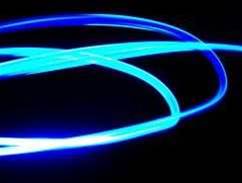
Designed by researchers from the National Institute of Standards and Technology (NIST) and the Joint Quantum Institute (JQI), the device includes two lasers -- one shining from above the quantum dot and the other illuminating it from the side.
By adjusting the intensity of the laser beams, the researchers are able to precisely control the energy levels of quantum dots, correct for variations caused by natural imperfections in the shape of a quantum dot, and generate more ideal signals.
The technique is similar to techniques employed since the mid-1970s by physicists working on single atoms and, more recently, by researchers working on artificial quantum dots.
The joint NIST-JQI team is said to be the first to demonstrate that laser-tuned quantum dots can efficiently generate photons one at a time, thus significantly improving quantum dots as a source of pairs of ‘entangled’ photons.
Entangled photon pairs are used in quantum cryptography to pass an encryption key that is by its nature completely secure, as any attempt to eavesdrop or intercept the key would be instantly detected.
While the newly-developed device currently still requires quite cold temperatures and sits in a liquid helium bath, it is compact enough to fit in the palm of a hand.
Researchers expect the size and functionality of the device to be promising for future implementation in quantum cryptography applications.



_(22).jpg&h=140&w=231&c=1&s=0)
_(20).jpg&h=140&w=231&c=1&s=0)






 iTnews Executive Retreat - Security Leaders Edition
iTnews Executive Retreat - Security Leaders Edition











_(1).jpg&h=140&w=231&c=1&s=0)



